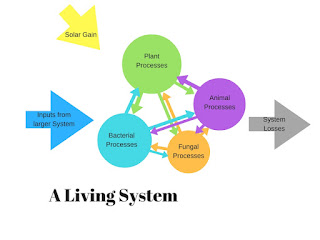20 Years Unlearning to Garden

I have been gardening a long time now. I don't remember the first time I put a seed in the ground and came back later to see a glorious plant. I must have been very young. So it is sixty plus years now. First I learned every thing I could about traditional gardening and then organic gardening and now, at 71, I am finally beginning to understand how wrong I have been all these years. I think I must be a slow learner. Just as an example, the common wisdom in gardening is that we cannot plant our warm season seeds until the ground is warm. That wisdom tells us that the seeds will rot if planted too early. Yet, I have picked batches of pole beans from plants that volunteered in my garden. The seeds were scattered after some beans dried on the vine and they spent the winter out there. I have a friend who counsels patience in all things because, when the conditions are right the seeds will gro...

